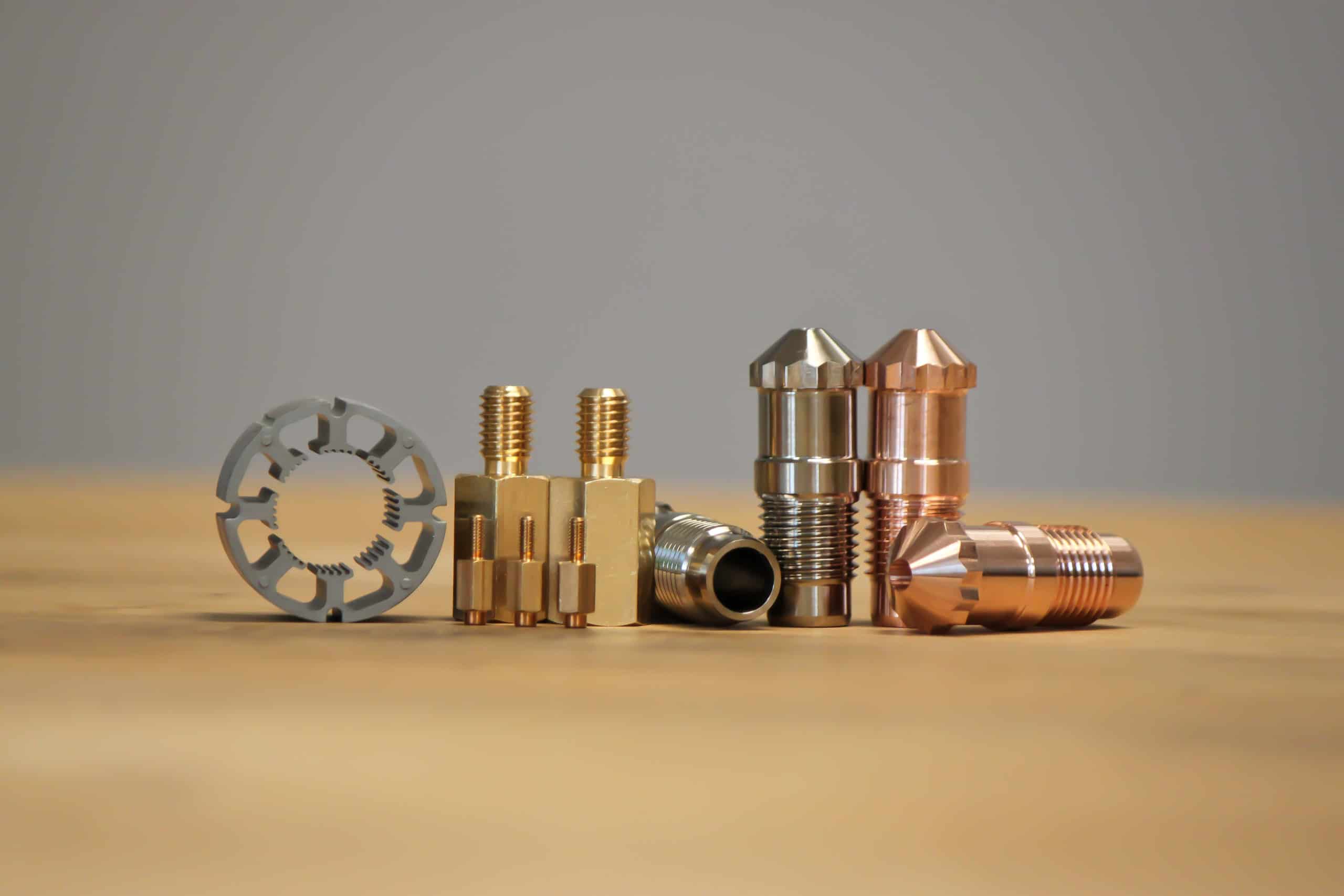Electroless nickel is an electroless plating process that produces a contour-true deposit over the entire surface. Even with complex shaped workpieces and in interior areas, an even distribution of layer thickness can be guaranteed. The nickel-phosphorus layer is characterized by hardness, wear resistance and very good corrosion resistance. In addition, the coating properties, such as magnetic/non-magnetic can be controlled by the phosphorus content. For this purpose, we offer the electroless nickel processes Mid-Phos and High-Phos.
electroless nickel plating – our processes at a glance
Mid-Phos Electroless Nickel Plating
Phosphorus content 6 – 9 %
Electroless nickel mid-phos is suitable for components that need to have higher hardness and wear resistance. It should also be noted that workpieces nickel-plated using the Mid-Phos process are ferromagnetic. The Mid-Phos process produces good corrosion protection, but it does not come close to that of the High-Phos process.
High-Phos Electroless Nickel Plating
Phosphorus content 10 – 12 %
Electroless Nickel High-Phos is suitable for components that need to be highly corrosion resistant and also non-magnetic. Since the hardness of the nickel-phosphorus alloy decreases with increasing phosphorus content, a lower hardness and wear resistance is produced than with the Mid-Phos process. With thermal post-treatment, the hardness and wear resistance can be increased.
Barrel coating
The most economical variant for bulk goods
For bulk materials such as contact and screw connections, electroless nickel plating in a barrel unit is the most economical method. Here, the parts are filled into a perforated drum that rotates around its axis of rotation. The filled drum then passes through the individual steps of pre-treatment, coating and post-treatment. The rotation ensures that the entire surface of each component in the drum is refined.
Rack coating
For careful handling of precision parts
Components that are not suitable for barrel plating due to their size or geometry are individually placed on a rack or suspended from it. If possible, standard frames are used for this purpose. For more complicated geometries, our in-house fixture construction department will produce a suitable frame in the shortest possible time. The rack goods are carefully guided through the coating process, thus ensuring the integrity of precision parts.
Sealing
With a transparent protective film
Sealing the electroless nickel-plated surface further increases corrosion resistance, improves the appearance and significantly reduces grip sensitivity. For this purpose, an organic, transparent protective film is applied to the electroless nickel layer. The sealant protects the porous surface similar to a clear coat and is recommended for casting molds, for example.
Thermal treatment
For higher coating adhesion and hardness
Heat treatment takes place after electroless nickel plating. Thereby the components are annealed in a furnace between 230°C – 400°C. Thermal post-treatment can increase the hardness of the electroless nickel layer to about 1000 (± 50) HV. Annealing also increases coating adhesion and improves wear behavior.
Hybrid Coating
Electroless nickel and hard chrome
In hybrid coating, components are first electroless nickel-plated and then hard chrome-plated. All the advantages of electroless nickel and hard chrome are combined in a single coating system.
The combination coating guarantees strong wear protection in conjunction with very good corrosion protection and is ideally suited for use in an environment with high chemical and mechanical stress.
The layer thicknesses are based on the technical requirements, e.g. 0.030 mm electroless nickel and 0.040 mm hard chrome. Learn more about our hybrid coating process.
Advantages of coating without external current
In comparison with electrolytic processes such as hard chrome plating, the electroless process has a decisive advantage: the uniform distribution of the coating thickness.
Electroless nickel plating is an autocatalytic reduction process. The electrons required for deposition are not supplied by an external power source as in galvanic processes, but are generated by the chemical reaction of a reducing agent within the electrolyte. As a result, the same deposition conditions prevail over the entire surface of the component and the nickel-phosphorus layer is built up uniformly.
Even with complex component geometries, uniform layer thickness distribution at corners, edges and inner surfaces is guaranteed.

Properties of your components
- Base material: all steels and non-ferrous metals
- Maximum dimensions: ⌀ 600 x 1100 mm
- Maximum weight: 250 kg
- Rack- or barrel plating
Coating properties electroless nickel
General
- Layer thickness: 0.003 to 0.050 mm
- Lead- and cadmium-free nickel electrolytes (RoHS compliant)
- Sealing possible
Mid-Phos
- Phosphorus content: 6 – 9 %
- Hardness in deposition state: approx. 600 HV 0.1
- Hardness after thermal treatment: approx. 1000 HV 0.1
- Corrosion resistance base material according to DIN EN ISO 9227-NSS: > 480 hours at s/min = 0.030 mm (without thermal treatment)
- Ferromagnetic
High-Phos
- Phosphorus content: 10 – 12 %
- Hardness in deposition state: approx. 550 HV 0.1
- Hardness after thermal treatment: approx. 900 HV 0.1
- Corrosion resistance base material according to DIN EN ISO 9227-NSS: > 500 hours at s/min = 0.030 mm (without thermal treatment)
- Non-magnetic
Various industrial sectors value electroless nickel for a wide range of functional properties. The layer properties depend to a large extent on the phosphorus content. Depending on the technical requirements, the layer properties can be controlled by the concentration of phosphorus.
The nickel-phosphorus layer has a very high corrosion resistance against a large number of corrosive media, which increases with rising phosphorus content. In contrast, the hardness and wear resistance decreases with increasing phosphorus concentration.
After electroless nickel plating, the hardness and wear resistance of the nickel-phosphorus layer can be increased by heat treatment. The magnetic properties of the electroless nickel alloy also depend on its phosphorus content. Workpieces nickel-plated in the Mid-Phos process are ferromagnetic, whereas the High-Phos coating is non-magnetic.
The processes are lead and cadmium free according to RoHS guidelines. According to FDA standards, the material is qualified to get in contact with food.
Express service
For orders with increased deadline pressure, you have the option of using our express service. This is agreed upon in direct consultation with our production control and charged via a surcharge.
Initial sampling
Before starting more complex series, we offer you an initial sampling at discounted rates. Here you can convince yourself of the quality of our processing. In addition, together we ideally coordinate our production processes.
Tips for delivery
For optimum quality and short lead times in our production, the delivery condition of the components is one of the decisive factors. Here you will find helpful tips for the delivery of your components.




